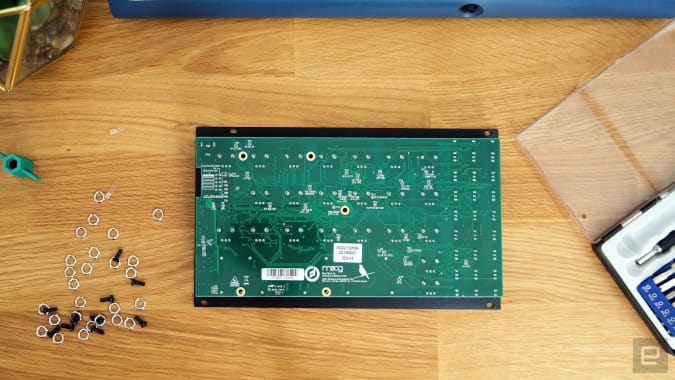Moog Mavis review: A surprisingly deep entry-level synth
The price of entry for a real-deal analog Moog synth isn’t particularly low. Other than the limited-run Werkstatt-01, the most affordable is the Minitaur, which will set you back $600. Now, that’s not unreasonably expensive but for those looking to dip their toes into the synth waters, it might be a big ask. Especially when a Volca Keys can give you three-note paraphonic analog sounds for just $170. That’s where Mavis comes in, it’s a pseudo-DIY monophonic semi-modular synth that delivers classic Moog sounds for just $350.
I say “pseudo-DIY” because all of the core components are already put together for you. There’s no soldering involved here. You’re simply putting the circuit board in a case and attaching it with some screws and nuts. It’s not particularly difficult, but the tiny nuts can be frustrating to get on the patch bay, and there are 24 of them to fight with. Not great if you’re as shaky as I am.
Hardware

Terrence O'Brien / Engadget
Once assembled, though, you have a legit Moog with all the basic features you’d expect, plus a few extras. There’s a single oscillator that can morph between saw and square wave, an LFO, an envelope generator and, of course, Moog’s iconic 4-pole low pass filter. There’s also a sample and hold circuit, a utilities section with mults, a mixer and an attenuator. Lastly, in a first for a Moog synth, there’s a wave folder, something you’d be more likely to find on West Coast-style synths, like those from Buchla. All of these parts can be mixed and matched, or combined with external gear, using the 24-point patch bay.
Mavis even has a built-in one-octave keyboard so you can start tapping out basslines immediately. But I highly recommend you get an external keyboard or sequencer with CV controls, like one of Arturia’s KeyStep or BeatStep series. The keys on Mavis are tiny and rubbery and require a good amount of force to play. And the lack of a sequencer or arpeggiator means you’d have to play it live. It gets the job done for noodling around and auditioning patches, but I wouldn’t want to use it for an actual performance.

